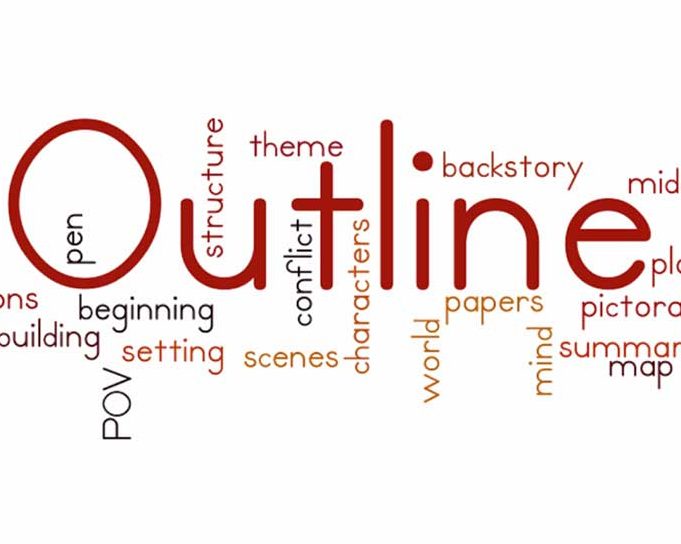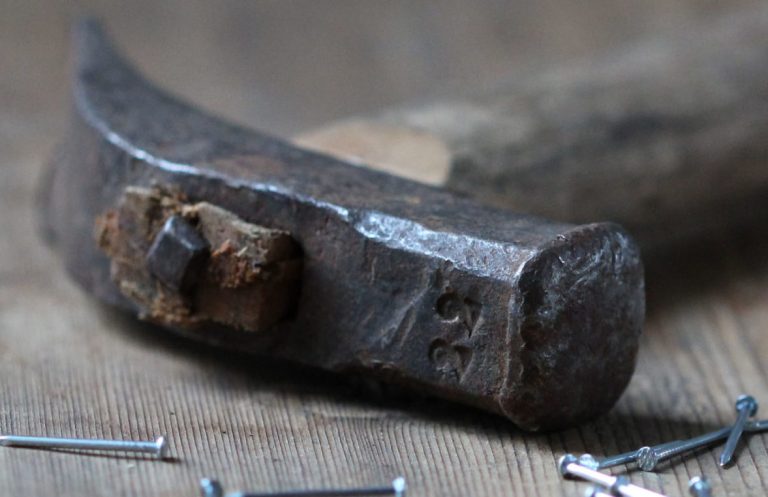Outlining Your Novel – Whether You’re a Plotter or a Pantser
Today’s guest post is by Harrison Demchick.
Are you a plotter or a pantser?
Pantser is a term that has come into vogue in the creative writing world over the last few years. When it comes to the process of writing, a pantser is one who flies by the seat of his pants, barreling his way to a completed draft with little planning and less revision. It’s an approach well-suited to writers who otherwise find themselves so stuck seeking perfection that they never actually finish anything.
I’ve never been one to fly by the seat of my pants. I’m a plotter. I plan. But I’ve also never been one to advocate for only one approach to writing. We’re all different writers with different writer brains. What works for one may not work for another, and as a writer you need to find what works best for you.
But fiction is complicated no matter how you approach it. And whether you’re a plotter or a pantser, I think there’s much to be gained by considering the value and application of a well-constructed outline.
What is an Outline?
We all know, broadly, what an outline is: an overview of the story and characteristics of your book. But the reason we know this broadly is that there are a lot of different ways to approach an outline.
An outline can be a handful of plot points, or it can be a complex breakdown into acts, subdivided into characters, informed by the purpose of each scene. An outline can address each and every scene or give a broad sense of the sorts of things you mean to happen in the lead-up to the climax.
You can write your outline by hand. It can be a Word document. It can be something more advanced—the writing software Scrivener is well-regarded as an outlining tool (among other things).
The most important consideration, then, is function: an outline helps you organize your story.
Why is this useful? Well, let’s face it: stories are complex.
Stories begin with an inciting incident. The inciting incident launches a chain of cause and effect, which defines the rising action that comprises the majority of the narrative. This builds to a climax, followed by falling action and dénouement.
Along the way you need to establish clear conflict and tension. This is typically based on the wants and needs of your character, and all of this to some extent defines your character arc—the transformation of your character from the start of the novel to the end.
Does this seem like a lot to balance? It is. Writing is a massive juggling act. And planning with an outline is a good way to keep the balls in the air.
What Defines an Effective Outline?
Again, an outline can be approached any number of different ways, and it’s up to each writer to determine what works best for them. But I find outlining a particularly useful tool in defining a clear sequence of cause and effect. For each plot point you intend, consider the consequences. How does this move the story forward? How does this impact the character?
Outlining your characters in advance can help too. What do they want? What do they need? What flaws must they to overcome? How do you intend for them to develop over the course of the story? And how can these developments be tied into our plot?
In other words, an outline can be a great way to sketch out the inner workings of your story so that the scenes you ultimately write are written with clear and defined purpose.
Outlining after Your First Draft Is Done
You may choose to forego an outline for your first draft—and that’s okay. But it’s important to understand that being a pantser doesn’t mean eschewing planning forever. It just means you don’t approach the first draft that way.
The concept of writing an outline after the first draft is severely undervalued, but it may just be one of your most important tools in the revision process. The reason is that the first draft you’ve finished, while a remarkable accomplishment, is naturally going to have some problems.
You probably came up with important plot points late in the process you now want to set up. You may lack a clear inciting incident. You may have written a character who doesn’t actually face a lot of conflict, or one who doesn’t seem to want anything.
Before you dive into your rewrites, it might be a good idea to step back, consider the problems in the first draft, and come up with a plan for how to resolve them. This new outline considers all the same elements we discussed above. It just does so after you’ve used the writing process to uncover what you want this story to be.
The notion of a post-draft outline isn’t only for pantsers either. A first draft written on the fly may have more structural concerns than a first draft carefully planned, but both are still first drafts, and both are going to require revision. There’s a lot of benefit in stepping back from your writing and developing a plan of attack before diving back into the writing process.
Roll with the Flow
I believe strongly in the usefulness of outlines in the process of crafting a great novel.
I’ve also never seen an outline that survived the writing process.
An outline is an enormously useful guide, but it’s very important to realize that it should never be more than that. Whether you’re a pantser or a plotter, planning to write a novel is very different than actually writing one, and problems will emerge during the writing process that you never saw coming. Plot points that sounded great in theory will prove fundamentally flawed on the page. That dramatic turning point may not make sense for the character you end up writing.
So a good writer must be agile. A good writer must be able to roll with the unexpected developments that emerge in the writing process. A good writer must be willing to change the plan if the story calls for it.
It’s okay to re-outline mid-draft. It’s okay to wing it if you feel strongly about a direction other than the one you outlined. The only thing that’s not okay is sticking stubbornly to a plan that isn’t working.
Basically, what it all comes down to is this: Every pantser needs to plot eventually, and every plotter needs sometimes needs to fly by the seat of their pants. And either way, wherever in the process it best fits, an outline is a useful, versatile tool to help guide you toward the completion of the great novel that, for all our different writer brains, we all aim to create.
 Harrison Demchick came up as a book editor in the world of small press publishing, working along the way on more than seventy published novels and memoirs. His first feature film, Ape Canyon, is currently in post-production. He’s the author of literary horror novel The Listeners (Bancroft Press, 2012), and his newest short story, “Magicland,” will appear in the October 2018 edition of Phantom Drift: A Journal of New Fabulism. He’s currently accepting new clients for book editing in fiction and memoir at the Writer’s Ally. Visit the Writer’s Ally for a free gift to help structure your outlines.
Harrison Demchick came up as a book editor in the world of small press publishing, working along the way on more than seventy published novels and memoirs. His first feature film, Ape Canyon, is currently in post-production. He’s the author of literary horror novel The Listeners (Bancroft Press, 2012), and his newest short story, “Magicland,” will appear in the October 2018 edition of Phantom Drift: A Journal of New Fabulism. He’s currently accepting new clients for book editing in fiction and memoir at the Writer’s Ally. Visit the Writer’s Ally for a free gift to help structure your outlines.
Need help with outlining? Check out these posts:












This post is timely for me, thanks. I’m using October to write the outline for my Nanowrimo book. You’ve “never seen an outline that survived the writing process.”:-)
You know, C. S. Lakin and I talked about that line when I submitted the post. For me, though, it’s not a refutation of careful planning or anything like that. It’s more an acknowledgment that, no matter how precisely you think the story through, things change once you’re writing. A sequence of events that seemed very clear in the outline suddenly reads less convincing. A new idea pops into your head that you didn’t have before. So it’s important to have a plan, especially for your first major revision–but you need to be agile too, because unanticipated developments are inevitable. It’s all part of the fun of crafting a story.
Thanks for reading, Priscilla!
Nice to see you here, Harrison and I agree with all the points you make. I’m halfway through my novel and went back and did what I call a developmental outline – bullet points for every major external and internal plot point that occurs in each chapter including the second half which isn’t yet written. It’s been enormously helpful when I go back and want to add in things that develop later in the book (as you suggested in your post) and gives me an ongoing, organic roadmap to follow as I write forward. It’s currently around 22 pages, & every time I make a change, I go back and revise the outline so at any time in the process, I can easily read it through it in about 20 minutes and get the story clear in my head before starting to write new- otherwise, it’s virtually impossible to hold a whole novel in your head.
Good to see you too!
I tend not to update my outlines as I go, but I *do* continue to refer back to it even if I find myself moving away from it. Even when specific plot points change, the outline is a clear record of my intent, and as such it still helps focus and define my writing.
Nice to meet you, Harrison. This is a great post, and I’ve shared it online. I’ll connect with you on social media. I agree that an outline is there to guide the writer and remind the writer of the important parts of novel-writing.
Thanks, Susanne, for welcoming Harrison to your blog. All best to both of you.
http://victoriamarielees.blogspot.com
Thanks for reading, Victoria!
I do a chapter outline. Knowing that the story will change no matter how well of an outline I create I choose the chapter instead.
Also; I have always viewed my first draft as an outline. By the time I finish I have a clear picture what I am trying to do.
Love your books on writing so much I’ve bought 3 sets. On for my kindle, one for notes in print, and one set to give away for my local writer’s group membership drive.
Starting my third book in my mystery series. You are right when you say that an outline can change. I look at the outline as putting all my wild ideas, characters and scenes in reasonable order in one sentence. Then I flesh out the outline with a 500 word summary. I use this summary so I never have to stare at a blank page. It’s like a 50 item series of writing prompts except it is my story. I then go wild with my imagination, crazy Rough Draft 1 where I let my characters romp thru the story.
This is where a 500-word idea per chapter is examined. Does it fit, or does it make sense? Can I combine 2 characters into one? Is this the right scene. Does the timeline make sense? What research is needed?
By doing a 500 summary in an outline form first, I save myself months of work by not perfecting a scene or character that doesn’t work. It’s easier to delete 500 words that don’t work or need rearranging than 2000 excruciatingly corrected and edited words per chapter.